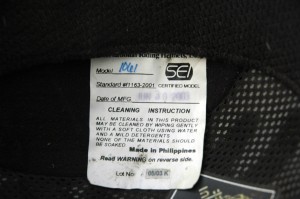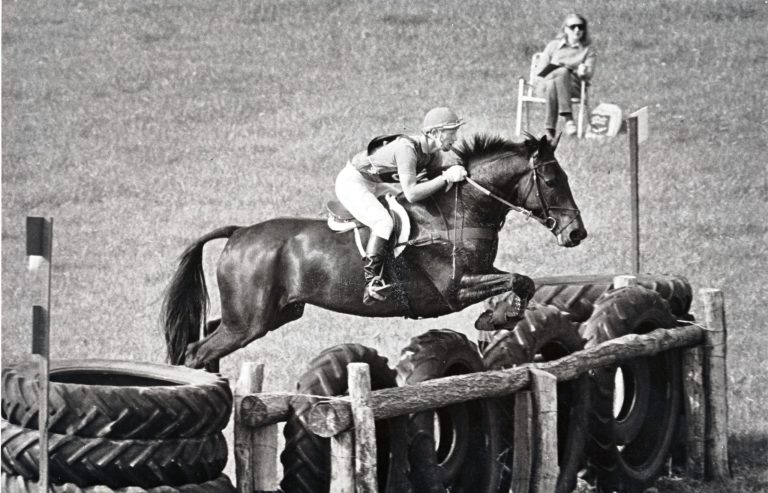The safety-helmet market is exploding, and competition among manufacturers to produce more ?attractive, streamlined, comfortable headwear is at an all-time high. For the consumer, this means dozens of helmets to choose from. This guide will help you wade through the different shapes, sizes and special features of new models.

Make Sure It Meets the Standard
If you plan to compete in your helmet, check your discipline’s specific rules ?regarding headgear. To be sure your helmet is indeed safe, buy one that has a permanent ASTM/SEI-certified label on the inside. Our country has some of the world’s highest equestrian helmet safety standards, written by the American Society for Testing and Materials (ASTM) and certified by the Safety Equipment Institute (SEI). Manufacturers with certified helmets generally exceed ASTM/SEI standards, but all of them easily meet the minimum requirements. (Note: Different countries have different certification standards and helmets can be “dual-certified”?certified by more than one country. If you buy an imported helmet, be sure it has an ASTM/SEI label.)
Some of the critical features SEI tests for are the helmet liner’s ability to crush on impact (thus absorbing as much of the concussion to your head as possible), the security of the three-point harness and the “slideability” of the shell, which allows your head to slide when it comes in contact with the ground, thus reducing the torque on your neck.
You’ll see a certification number listed on the helmet label. This signifies the year of the most current update to the standard. So, for example, an ASTM F1163-04a/SEI-certified helmet meets the 2004 standard (at print time, this was the most current standard). The letter ?after the number ?denotes a subsequent change within the particular year. Manufacturers have a one-year grace period to comply with any substantive changes in the standard. The SEI Web site (www.seinet.org) lists the revision year standard that each helmet has passed. (This is often more up-to-date than the fine print in catalogs, which sometimes lag behind when models are upgraded to conform to new standards). A helmet that has been SEI-certified to the previous standard (at print time, this was ASTM F1163-01) remains certified even though SEI is now testing to the most ?recent edition. Although there is nothing wrong with the older version, when buying a new helmet, purchase one that conforms to the newest version. And check the manufacturing date (also printed on the helmet label) to be sure you’re buying a helmet made during the past year.

When it comes to cost, the old saying, “you get what you pay for,” no longer applies to helmets. Some of the safest models are available for as little as $35. At the other end of the spectrum, if style and brand name matter to you, you can spend more than $2,000.
Size and Shape
One of the most important qualities of any helmet is fit?but no two heads are alike in size and shape. Many manufacturers offer two, and sometimes three, different sizing systems, including the traditional incremental system, which measures in eighth-of-an-inch increments, as well as three- to five-size systems, ranging from extra small to extra large.
Some brands trend more toward one head shape than another, but most manufacturers offer alternative models to fit particular shapes. For example, many popular models are available in “oval” and “long-oval” options. Ask your local tack store representative or call a catalog or online retailer’s customer service number to order these specific sizes.
Another feature that many companies now offer is a “stabilization system,” ?designed to help fine-tune the fit of a helmet. Some are adjusted via an internal band with a hook-and-loop fastener. Others have a small positioning system or dial in the back of the helmet. Instructions for using a specific system are included with each helmet. Even in helmets that don’t have stabilization systems, manufacturers offer extremely useful fitting instructions for each particular model. These instructions are so important that they’re often attached to the helmet in such a way that you need scissors to remove them.
If your hair is long or thick, the way you style it can affect the fit of your helmet. If you wear your hair in a ponytail, look for a helmet with a specific accommodating design. If you wear your hair differently at shows than at home, you may want to invest in two different-sized helmets?or purchase a helmet with a stabilization system that is adjustable enough to fit both styles.
Before I explain fitting techniques in more detail, let’s discuss where to shop for helmets.
Helmet Retailers
The ideal place to buy a helmet is a local tack store with a wide variety of models and employees experienced in helmet fitting. Be prepared to try on several different makes and sizes. The more knowledgeable the store’s staff, the fewer helmets you’ll have to try on. Even if your local tack store doesn’t carry a helmet that fits you perfectly, it should be willing and knowledgeable enough to order what you need.
If you’re shopping from home, ?either by catalog or Internet, start by determining your head size. Wrap a cloth measuring tape or string horizontally around the widest part of your head to measure its circumference. Measure the string by stretching it out against a yardstick. Then, using the size guide available at tack stores and printed in catalogs and Web sites, convert this measurement to a size. Note: Although most manufacturers use the same conversion chart, Troxel has different charts for its different models.
Look closely at the photos of the ?helmet you’re considering. If your head is peaked high in the middle, choose a helmet that extends farther down on the sides and back. If you’re not sure how a particular model will fit, call the dealer’s customer service number for ?assistance. Even then, it’s safest to order more than one size or model to be sure you get the right fit. Most companies have return policies in place to streamline this process.
Wherever you shop, don’t ever “make do” with a helmet that doesn’t quite fit. And never buy a used helmet! Even one that looks as good as new may have crushed foam liner under the shell that isn’t visible from the outside.
Fitting Tips
When you try a helmet, place it firmly on your head with the brim or front edge horizontal to the ground. Without attaching the harness, check that:
The front of the helmet rests an inch above your eyebrows.
When you move the helmet from side to side and back and forth with one hand on top of the helmet, your forehead and eyebrows move with it.
When you bend over, it doesn’t fall off.
The back of the helmet reaches or covers your occipital bump (the bony lump at the base of your skull that you feel when you run your hand up the back of your neck).




If you find a helmet that fits snugly in the front and the back of your head, but there are gaps on the sides, you need an oval or long-oval model. If you experience the opposite?snug on the sides but loose at the front and back, ask the customer service agent to help you find a rounder model.
Once you find a helmet that satisfies all the above criteria, wear it around the store (or your house, if you mail ?ordered) for 15 minutes. The body heat emanating from your head will change the fit slightly, usually for the better. If you experience any pain, uncomfortable pressure or red marks on your forehead, keep shopping.
Don’t attach the harness until the helmet has passed the above tests.
To meet safety standards, manufacturers now make helmets with jaw straps, rather than chin cups or leather straps worn on the point of the chin, because jaw straps are more secure. They are designed to keep the helmet in place during two potential impacts?a second bounce of the head on the ground or a kick. (Because of their nature as prey animals, horses sometimes instinctively kick out at objects falling from their backs.)
To work properly, the jaw strap must be adjusted so that it is in ?constant contact with your two jawbones. If you wear the jaw strap ?flapping an inch or so below your chin, don’t count on your helmet ?protecting you in a fall. All of the strenuous testing we require of helmets is done with the jaw strap properly adjusted so that it’s in contact with the “jawbones” (two metal bars simulating your jawbones) of the head form (a head-shaped metal object with sensing instruments inside used for impact testing).
Finally, to optimize your helmet comfort, if it has a stabilization ?system, fine-tune your fit by adjusting this according to the manufac?turer’s instructions.
Remember, the better your helmet fits, the better it will protect you. And, the more comfortable it is, the more likely you are to wear it.
When Drusilla Malavase started her first ad hoc committee to advocate ?safety helmet use in the 1960s, she jokes, “I didn’t know Latin very well. I ?didn’t know that ?ad hoc’ means ?for the rest of your life.'” The STOP-DWI (Special Traffic Options Program for Driving While Intoxicated) coordinator for ?Ontario County, New York, and co-chair of ASTM International’s ?Equestrian Headgear Committee, Dru also serves as an expert witness on horse-related accident and injury cases.










